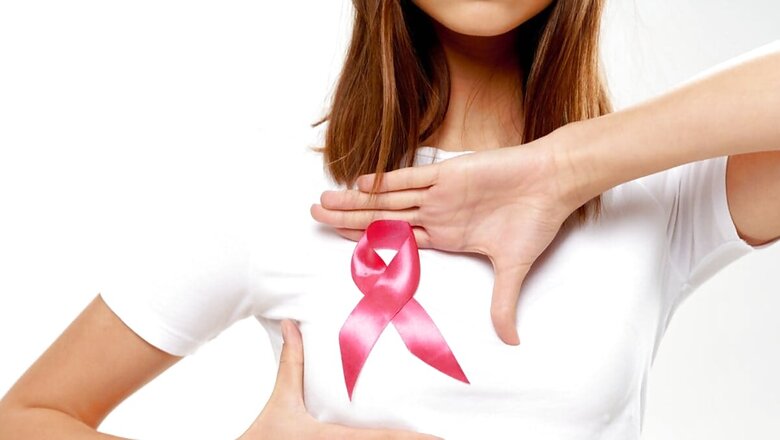
views
Breast cancer is a growing health concern for women in both rural and urban areas of India. In recent years, there has been a trend of younger women (age group 40-49) being diagnosed with breast cancer. Moreover, women even younger than 40 have recently been in the news with newly diagnosed advanced breast cancers. This is concerning, as breast cancer screenings are usually recommended only after age 40. Awareness of breast cancer and breast self-examination are key factors that can help mitigate this problem.
While cancer screenings are essential for diagnosing and preventing late-stage breast cancer, access to these facilities is limited, especially in rural India. Additionally, most women diagnosed with breast cancer at a young age often have advanced-stage and higher-grade tumours, which can impact overall survival and future recurrences.
Why are younger women not screened for breast cancer?
Historically, breast cancer has been diagnosed in women over 50 years old. Screening in women younger than 40 is not recommended as it lacks cost-effectiveness and potential benefit. It can also lead to the psychological toll of false positives and more lifetime exposure to small doses of radiation. However, considering recent trends, it is now recommended that risk assessment for breast cancer be considered so that those at higher risk are screened promptly.
In addition, easy access to mammography and other diagnostic tools, such as ultrasound and MRI of the breasts, can go a long way in helping women receive timely diagnosis and treatment.
Common risk factors for breast cancer
Although several risk factors for breast cancer exist, the recent trend of increased diagnoses in young women lacks a clear explanation. These factors include obesity, smoking, alcohol consumption, radiation exposure, and lifestyle choices such as delaying childbirth. With modernisation and increased access to higher education, women in India are postponing marriage and childbearing to focus on careers and other responsibilities. This delay, particularly having a first child after 35, can increase breast cancer risk. Conversely, having children before 35 and breastfeeding can reduce the risk.
Dense breast tissue is another risk factor. Additionally, prolonged estrogen exposure, which can involve early menstruation and late menopause, plays a significant role. Beyond these factors, lifestyle choices such as diet, weight management, and alcohol consumption, alongside environmental exposures, can significantly influence breast cancer risk.
Preventing Breast Cancer: Is It Possible, and How Can We Raise Awareness?
Although specific risk factors cannot be controlled, regular self-breast examination, clinical examination by a doctor annually, lifestyle measures, regular screenings, and preventive measures that specialists recommend can lower the risk of developing breast cancer.
Our lifestyle plays a vital role in our overall health and well-being. That is why there is a direct relationship between lifestyle choices and breast cancer risk. For instance, obesity, which is considered a lifestyle disease as it is mainly caused by a sedentary routine and poor dietary habits, can increase the risk of developing breast cancer. In addition, alcohol and smoking can also increase the risk.
Preventive health checkups, including self-breast exams and mammograms, are crucial for reducing breast cancer risks. While mammograms are not generally recommended before age 40, women at high risk may need to start earlier. One of the first criteria for assessing this risk is understanding the family history of breast cancer. If a woman has a first-degree (or sometimes second-degree) relative with breast cancer and/or ovarian cancer, she is considered at high risk for breast cancer. First-degree relatives include parents and siblings, while second-degree relatives include aunts, uncles, grandparents, and half-siblings.
Another highly recommended action to reduce cancer risk is undergoing preventive health check-ups and consulting a specialist. In addition, performing a breast self-examination every month can go a long way in helping to spot early signs and symptoms associated with breast cancer. A hard breast mass that does not change during the month, changes in the skin on the breast, redness, asymmetry between breasts, or discharge from the nipple can be signs of breast cancer. That said, not every breast mass in a young woman is breast cancer.
Early Steps to Understand and Reduce Breast Cancer Risk
Awareness of breast cancer, including its signs, symptoms, and self-examination techniques, is vital for timely diagnosis. Equally important are healthy lifestyle practices such as a balanced diet, daily exercise, quality sleep, and regular preventive checkups. These steps can lead to earlier diagnosis, significantly improving patient outcomes.
While breast cancer can feel daunting, understanding risk factors, signs, and symptoms empowers individuals to navigate this disease and take proactive steps towards prevention.
Dr Viju Murthy is Breast Cancer Surgeon, HCG Cancer Center Mumbai. Views expressed in the above piece are personal and solely those of the author. They do not necessarily reflect News18’s views.




















Comments
0 comment